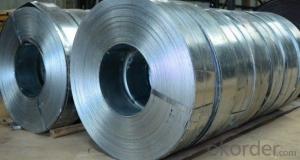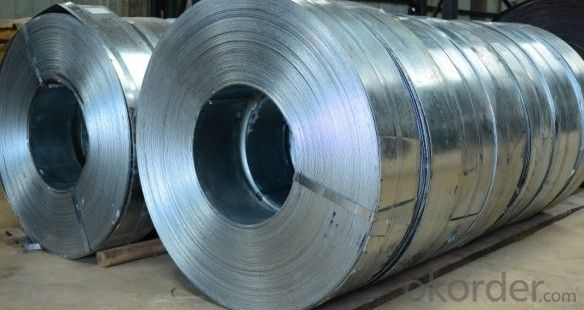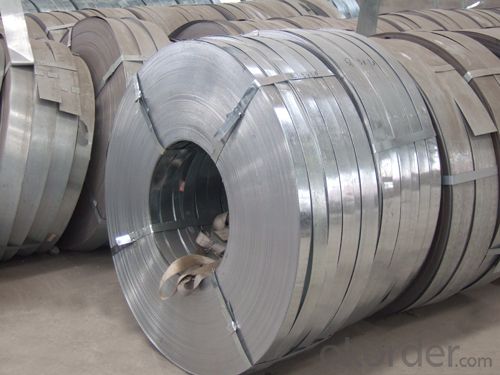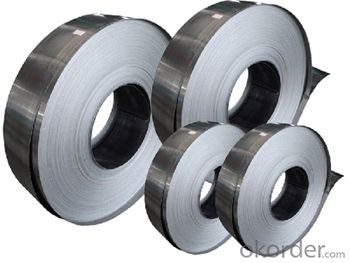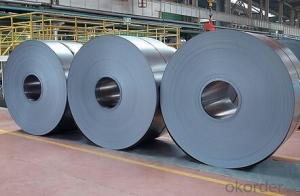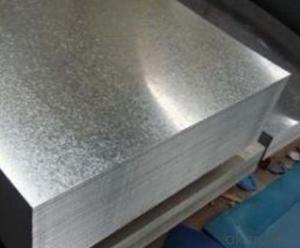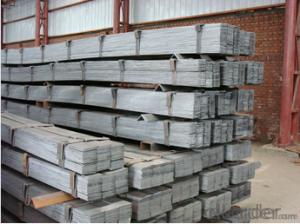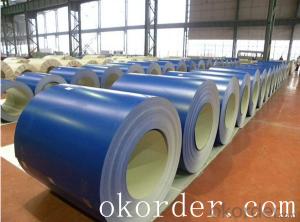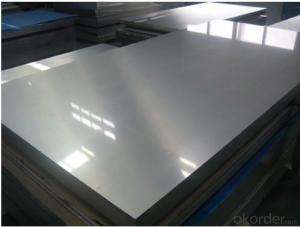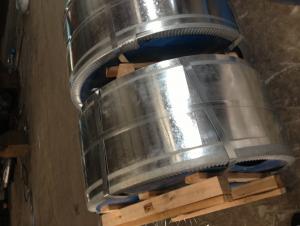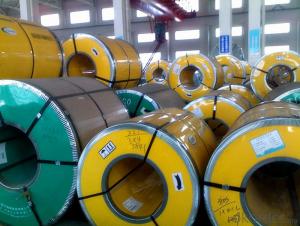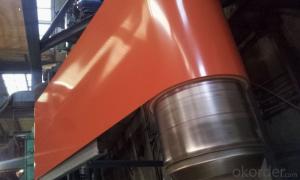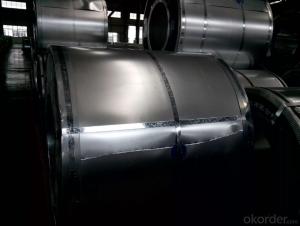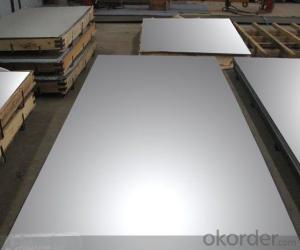Galvanized Steel Strip with High Quality-SGCC 630*0.8mm
- Loading Port:
- China main port
- Payment Terms:
- TT OR LC
- Min Order Qty:
- 50 m.t
- Supply Capability:
- 10000 m.t/month
OKorder Service Pledge
OKorder Financial Service
You Might Also Like
Galvanized Steel Strip with High Quality-SGCC 630*0.8mm
Product Description:
Specifications:
1. Thickness: 0.8mm
2. Width: 630mm
3. Material: SGCC
4. ID: 508mm or 610mm
5. Spangle: Regular spangle or zero spangle
6. others: chromated or no chromated; oiled or no oiled.
Advantages of Galvanized Steel Strip with High Quality-SGCC 630*0.8mm:
1. Uniform coating;
2. Strong adhesion;
3. Strong corrosion resistant ability
Usage of Galvanized Steel Strip with High Quality-SGCC 630*0.8mm:
1. Making pipes, like Greenhouse tubes, drinking water pipe, heating pipe, gas pipe and so on;
2. Used in automobile;
3. Used in construction;
4. Used in agriculture, fishery and so on.
FAQ of Galvanized Steel Strip with High Quality-SGCC 630*0.8mm:
Q1: How soon can we receive the product after purchasement?
A1: Within three days of placing an order, we will begin production. The specific shipping date is dependent upon international and government factors, but is typically one month-two months.
Q2: How do you guarantee the quality of our products?
A2: We have established an advanced quality management system which conducts strict quality tests at every step, from raw materials to the final product. At the same time, we provide extensive follow-up service assurances as required.
Q3: The prices are invoicing on theoritical weight or on actual weight?
A3: We can do it in both manners, according to the customers' request.
Images of Galvanized Steel Strip with High Quality-SGCC 630*0.8mm:
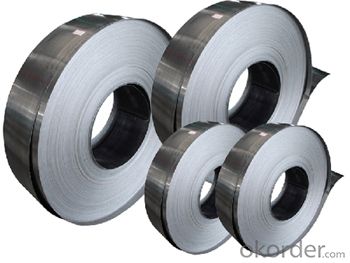
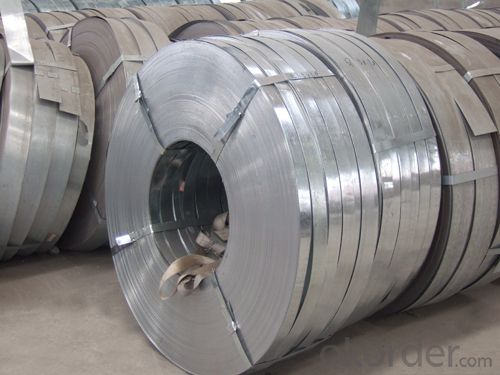
- Q: How are steel strips priced in the market?
- Steel strips are typically priced in the market based on several factors, including the current demand and supply dynamics, the quality and specifications of the steel strips, and prevailing market conditions. These pricing factors are influenced by the cost of raw materials, production processes, transportation, and any additional value-added services. Market competition and global steel prices also play a significant role in determining the pricing of steel strips.
- Q: What are the factors that affect the weldability of steel strips?
- Several factors can affect the weldability of steel strips, including the chemical composition of the steel, the presence of impurities or contaminants, the thickness and surface condition of the strips, the welding method used, and the heat input during the welding process. Additionally, the presence of residual stresses, the welding procedure employed, and the skill and experience of the welder can also influence the weldability of steel strips.
- Q: How are steel strips processed for improved surface finish?
- Achieving an improved surface finish for steel strips can be accomplished by employing various methods. One commonly used technique involves pickling and oiling. In this process, steel strips are submerged in an acidic bath, typically hydrochloric acid, to eliminate any scales or impurities present on the surface. This step ensures the creation of a smooth and clean surface. Following pickling, the strips are thoroughly rinsed and then coated with oil to prevent oxidation and enhance the overall appearance. Another approach to enhancing the surface finish of steel strips is through cold rolling. This method entails passing the strips through a series of rollers at room temperature. Not only does this process reduce the thickness of the strips, but it also improves the surface finish. Cold rolling plays a crucial role in producing a uniform and smooth surface, effectively minimizing imperfections and roughness. Furthermore, annealing can be employed as a means of improving the surface finish of steel strips. Annealing is a heat treatment process that involves heating the strips to a specific temperature and gradually cooling them. This technique effectively relieves internal stresses and enhances the crystal structure of the steel, ultimately resulting in a refined and smoother surface. Moreover, mechanical treatments like grinding or polishing can further enhance the surface finish of steel strips. Grinding employs abrasive wheels or belts to eliminate imperfections and roughness from the surface. On the other hand, polishing utilizes a fine abrasive material to create a smooth and glossy surface. To summarize, various methods such as pickling and oiling, cold rolling, annealing, and mechanical treatments like grinding and polishing can be employed to achieve an improved surface finish for steel strips. These processes effectively eliminate impurities, reduce roughness, and result in a clean and smooth surface, enhancing both the appearance and performance of the steel strips.
- Q: What are the different thicknesses available for steel strips?
- The different thicknesses available for steel strips vary depending on the application and industry requirements. Common thicknesses can range from very thin, such as 0.001 inches (0.0254 mm), to thicker options like 0.25 inches (6.35 mm) or more. However, it is important to note that steel strips can be manufactured in a wide range of thicknesses to meet specific project needs.
- Q: How are steel strips processed for slitting into narrower widths?
- To create narrower steel strips, mechanical operations are utilized to process steel strips. The initial step involves uncoiling the steel strip from a large coil and feeding it into a slitter machine. This machine contains multiple circular blades that are spaced apart based on the desired width of the final strips. While the steel strip passes through the slitter machine, the circular blades rotate and cut the strip into narrower widths. The width of each strip is determined by the distance between the circular blades. To ensure the steel strip remains taut throughout the process and avoid any buckling or creasing, the slitter machine is equipped with a tensioning system. Following the slitting process, the steel strip undergoes additional processes to refine and finish the strips. These processes may include edge trimming, where any uneven or rough edges are removed to achieve smooth and precise edges. Additionally, the strips may be leveled to eliminate any residual stresses and maintain flatness. Once all the necessary processing steps are completed, the narrower steel strips are recoiled and packaged for shipment or further processing. The slitting process allows for the production of multiple narrower strips from a single large coil, enhancing the versatility and usability of the steel in various applications. In summary, the processing of steel strips for slitting into narrower widths involves precise cutting, edge trimming, leveling, and recoiling to produce strips that meet specific width requirements and quality standards.
- Q: Are steel strips used in the construction industry?
- Yes, steel strips are commonly used in the construction industry. They are often used as structural reinforcements, such as in beams, columns, and foundations, to provide strength and durability to the structures. Steel strips are also utilized in various applications like roofing, cladding, and framing due to their high tensile strength, corrosion resistance, and versatility.
- Q: Can steel strips be used in furniture manufacturing?
- Yes, steel strips can be used in furniture manufacturing. They are commonly used for structural support, reinforcement, and decorative purposes in various types of furniture such as tables, chairs, and shelving units. Steel strips offer strength, durability, and versatility, making them suitable for creating modern and industrial-style furniture designs.
- Q: How are steel strips processed for precision cutting?
- Steel strips are processed for precision cutting through a series of steps that involve cleaning, levelling, slitting, and edge trimming. These processes ensure that the steel strips are free from impurities, have consistent thickness, and have well-defined edges, resulting in accurate and precise cuts.
- Q: How are steel strips tested for quality control?
- Steel strips are tested for quality control through various methods such as visual inspection, dimensional measurements, mechanical testing, and chemical analysis. Visual inspection involves examining the surface for any defects like scratches, dents, or discoloration. Dimensional measurements are performed to ensure the strip meets the required thickness, width, and length specifications. Mechanical testing involves subjecting the strip to tests like tensile strength, yield strength, and hardness to evaluate its mechanical properties. Chemical analysis is conducted to determine the composition of the steel, ensuring it meets the desired chemical requirements. These tests collectively ensure that steel strips meet quality standards before they are used in various applications.
- Q: Can steel strips be used in the production of automotive springs?
- Automotive springs can be produced using steel strips. These strips are frequently utilized as a primary material in the manufacturing process of various spring types, including those for automobiles. The exceptional strength and durability of steel make it an ideal choice for springs that must endure heavy loads and repetitive compression and extension cycles. By shaping and forming steel strips, they can be transformed into the desired spring configuration, providing the necessary flexibility and resilience required for automotive suspension systems. Furthermore, the mechanical properties of steel strips can be improved through heat treatment, enhancing their hardness and tensile strength. This makes them suitable for automotive applications where reliability and performance are of utmost importance. All in all, the utilization of steel strips in the production of automotive springs is a widespread and efficient practice.
Send your message to us
Galvanized Steel Strip with High Quality-SGCC 630*0.8mm
- Loading Port:
- China main port
- Payment Terms:
- TT OR LC
- Min Order Qty:
- 50 m.t
- Supply Capability:
- 10000 m.t/month
OKorder Service Pledge
OKorder Financial Service
Similar products
Hot products
Hot Searches
Related keywords
